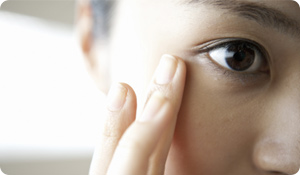
Skin discoloration has several causes - some harmless and some that can be signs of a larger problem. But most cases respond best to early treatment so your first step should be to talk to a doctor. Here are some of the diagnosis and treatment options they may suggest.
Symptom: Hyperpigmentation or Age Spots
Cause: Sun damage
Solution: Age (liver) spots are an inevitable part of aging for most of us. These flat, brown, spots usually appear on the areas of the body that were most often exposed to sun, like your face and shoulders. Over-the-counter creams designed to even out skin tone can help fade them and your dermatologist can prescribe stronger lightening or bleaching creams. But the best thing to do to prevent them from getting worse is to slather on the sunscreen. Make sure your dermatologist is checking these patches regularly to make sure that you're not showing any early signs of skin cancer.
Problem: Blotchy, reddened skin
Cause: Rosacea or dermatitis
Solution:
If you've ruled out severe acne as a cause, redness could be a sign of rosacea, an un-curable but manageable condition where your skin gets overly flushed. Redness can also be caused by some kind of dermatitis (rash) due to allergic reaction. In either case, a dermatologist will help you identify the cause and treatment options.
Symptom: Small, itchy patches of skin that grow larger in the sun
Cause: Tinea Versicolor (fungal skin infection)
Solution:
Mild cases of Tinea Versicolor may respond to an over-the-counter lotion, cream, or even dandruff shampoo. But if those treatments don't respond after a few weeks or the condition worsens, see a doctor. They can prescribe a stronger oral or topical medication. Just keep in mind that your skin color may not be fully restored for several weeks and that the infection may resurface in hot or humid weather.
Symptom: Bluish skin
Cause: Cyanosis, or a lack of oxygen in blood
Solution: See a doctor immediately! If you're suffering from cyanosis, you may have a bigger medical problem like major organ failure or toxic poisoning. Cyanosis is easier to spot in the lips or nail beds, since it takes a significant lowering of oxygen to change the skin color.
Symptom: Milky white skin patches
Cause: Vitiligo, or a loss of cells producing melanin in your skin
Solution: There is no cure for vitiligo, though doctors may be able to help to stop or slow down the de-pigmentation process. It doesn't necessarily require medical treatment, but self-care steps like camouflage creams and sunscreen can help disguise. Medical options include topical creams, UV therapies, skin grafting, and even de-pigmentation of the rest of your normal skin to even out skin tone.
Sources:
American Academy of Dermatology: "Allergic Contact Rashes" Web. American Academy of Dermatology. 2005
http://www.aad.org/public/publications/pamphlets/skin_allergic.html
The Mayo Clinic: "Age Spots (Liver Spots)" Web. Mayo Foundation for Medical Education and Research. March 20, 2009
http://www.mayoclinic.com/health/age-spots/DS00912
The Mayo Clinic: "Rosacea" Web. Mayo Foundation for Medical Education and Research. November 15, 2008
http://www.mayoclinic.com/health/rosacea/DS00308
The Mayo Clinic: "Tinea Versicolor" Web. Mayo Foundation for Medical Education and Research. February 23, 2010
http://www.mayoclinic.com/health/tinea-versicolor/DS00635
The Mayo Clinic: "Vitiligo" Web. Mayo Foundation for Medical Education and Research. April 21, 2009
http://www.mayoclinic.com/health/vitiligo/DS00586





